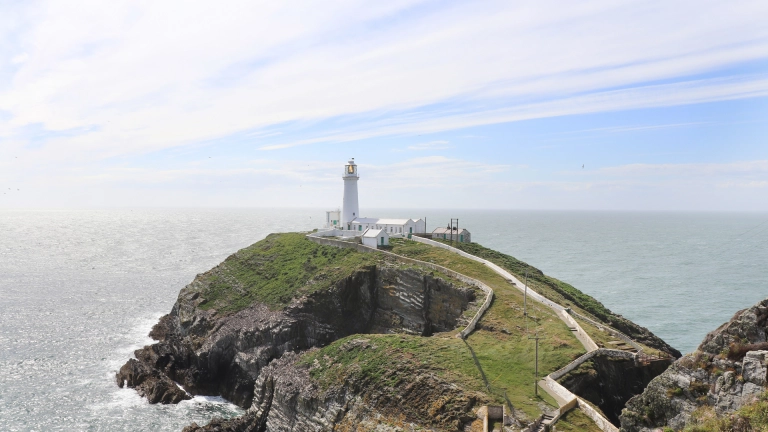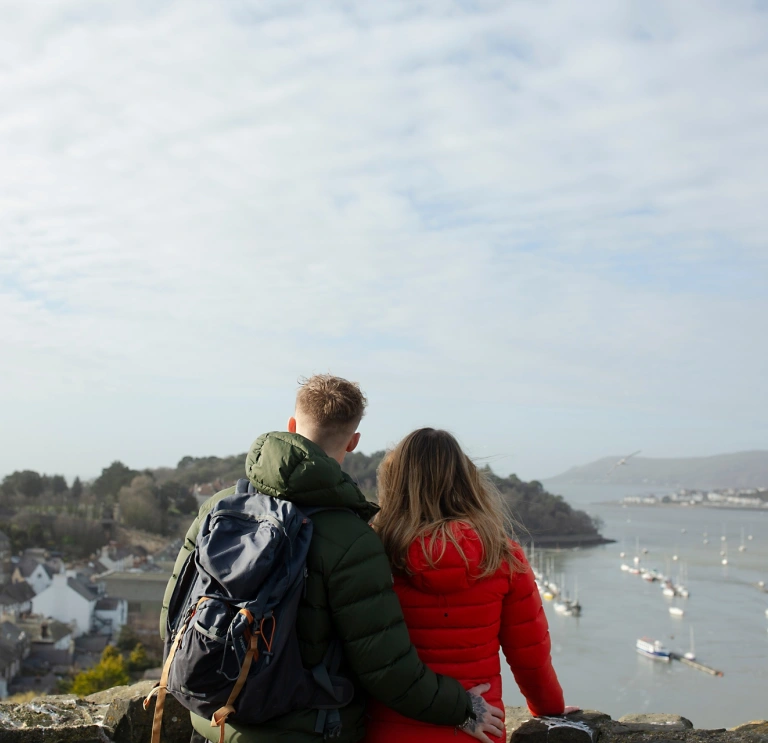You can’t miss the castles (literally: they’re enormous). Nor should you miss out on the many other culture and countryside highlights. Here are some of the top things to do on The North Wales Way, ordered along the route from east to west.
Take in a play a Theatr Clwyd
Based in Mold, Theatr Clwyd is a highly effective regional arts centre. Housed in a muscular complex of 1970's- era brick and glass, it includes two theatres, a cinema and studio spaces offering all sorts of performances. Cinema, dance, art exhibitions and live music all feature, but it's theatre that's the really big draw. It’s home to one of Wales' major drama companies, staging productions throughout the year.
Read more: 10 top theatres in Wales
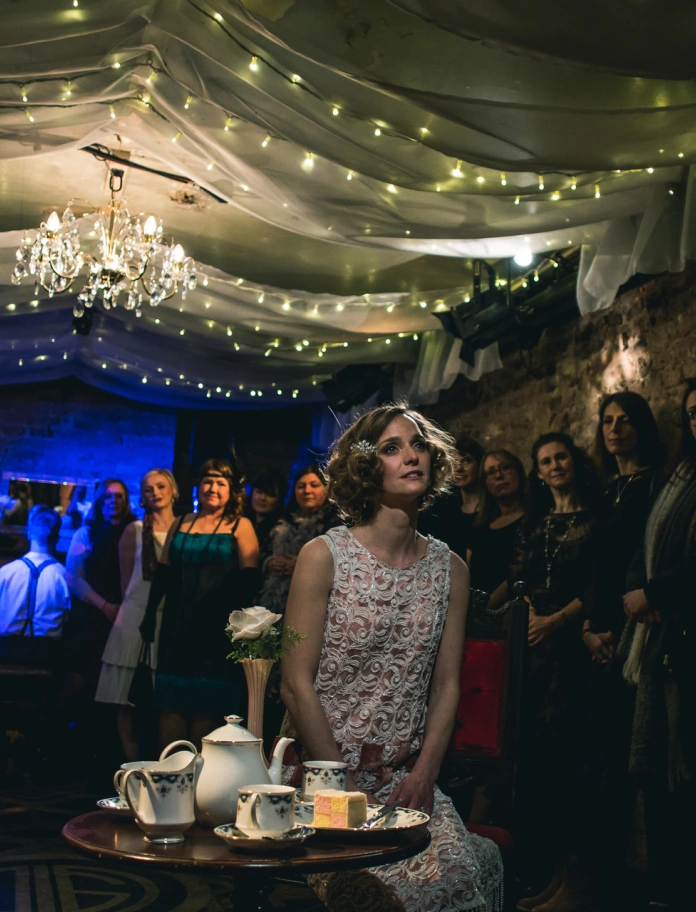
Learn about conservation at Welsh Mountain Zoo
The Welsh Mountain Zoo stands high above Colwyn Bay, with panoramic views, breathtaking scenery, beautiful gardens and plenty of insights into some of the world's most unusual and at-risk species. Relax in the surroundings and get closer to wildlife with daily bird shows, animal feeding sessions and talks.
Hit the town in Llandudno
The lovely seaside Victoria spa resort of Llandudno offers lots to do and some great places to stay and eat too. Wander along the historic pier, hop on the San Fran-style tram up the Great Orme, take in some modern art at the Oriel MOSTYN Gallery or sample some fine Welsh whisky at the Penderyn Distillery. If you’ve time see what’s on at Venue Cymru – it’s one of the top venues in North Wales with performances by Welsh National Opera among many others.
Read more: Things to do on holiday in Llandudno and Colwyn Bay

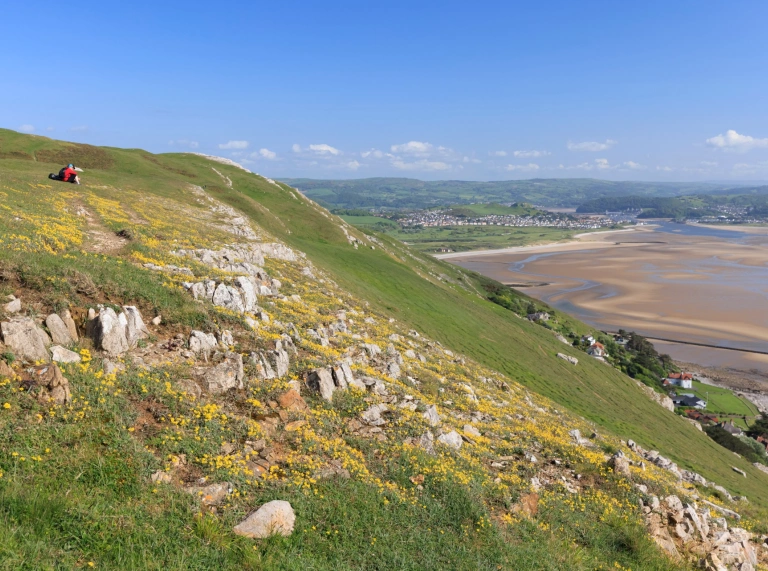
Climb the towers at Castell Conwy (Conwy Castle)
Visible for miles away as you approach Conwy, this 13th century Castell Conwy (Conwy Castle) is one of several local masterpieces by Edward I’s builder, James of St George. The castle still utterly dominates the town, which has one of the finest sets of town walls in Europe. The views from the tops of the towers across the estuary are without parallel. The town is well worth a visit too with lots of independent shops and eateries.
Read more: Top things to do in Conwy
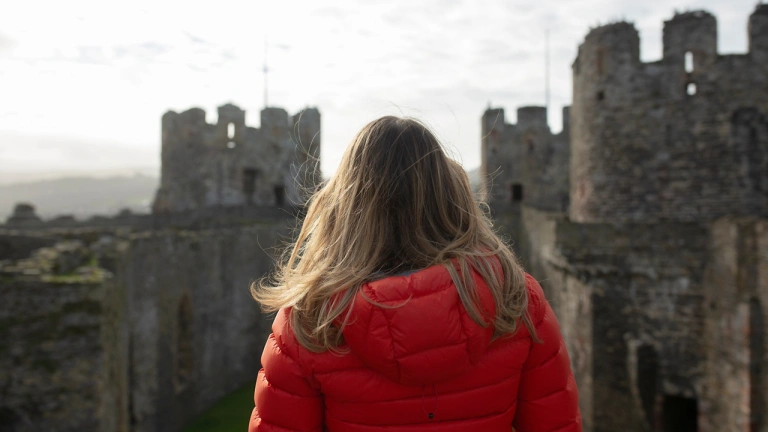
Explore the UNESCO Slate Landscape
You’re on the edge of the magnificent UNESCO world heritage Slate Landscape of Northwest Wales here. There are lots of ways to explore, but perhaps the best is on foot. You can do the first section of the Snowdonia Slate Trail from Bangor to Bethesda for some spectacular mountain scenery and epic views of slate mining workings carved into the hillside. Section One is about six miles (10km) one way and you can hop on a bus back.
Read more: Visit our UNESCO world heritage sites
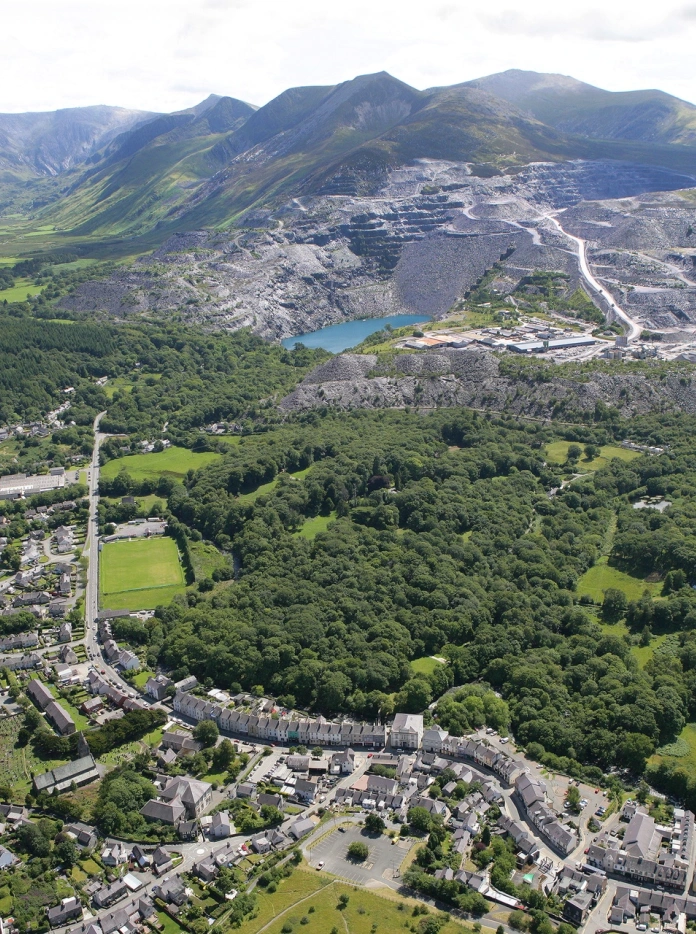
Get up close to the Menai Bridges
You won't be able to miss the two magnificent bridges spanning the Menai Strait – Thomas Telford's Suspension bridge was built in 1826, and Robert Stephenson's Britannia design arrived in 1840. You can find out more and discover the history of the Strait in the Menai Heritage Experience, then take a closer look for yourself with a stroll along the bank or hop aboard a high speed RIB boat!
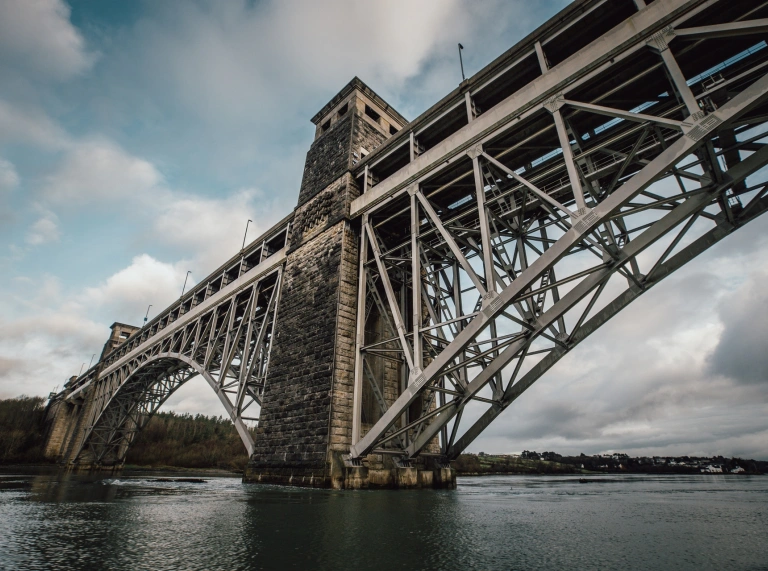
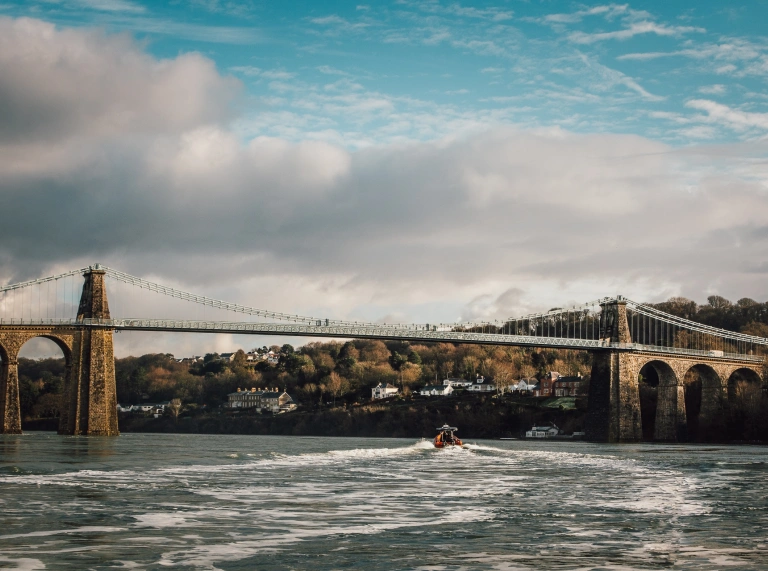
Storm the battlements at Castell Biwmares (Beaumaris Castle)
The last of Edward I’s chain of fortresses is still the most technically perfect castle in Britain, with an ingenious ‘walls within walls’ layout. Edward never got round to finishing Beaumaris (he was distracted by unruly Scots). Even so, UNESCO ranks Castell Biwmares (Beaumaris Castle) as one of ‘the finest examples of military architecture in Europe’, and together with Edward’s other Welsh castles, this is a World Heritage site.
Read more: A trail of majestic castles
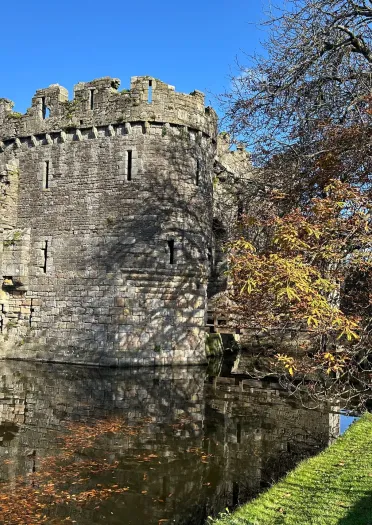
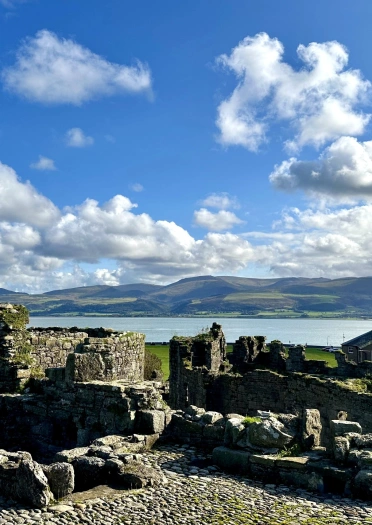
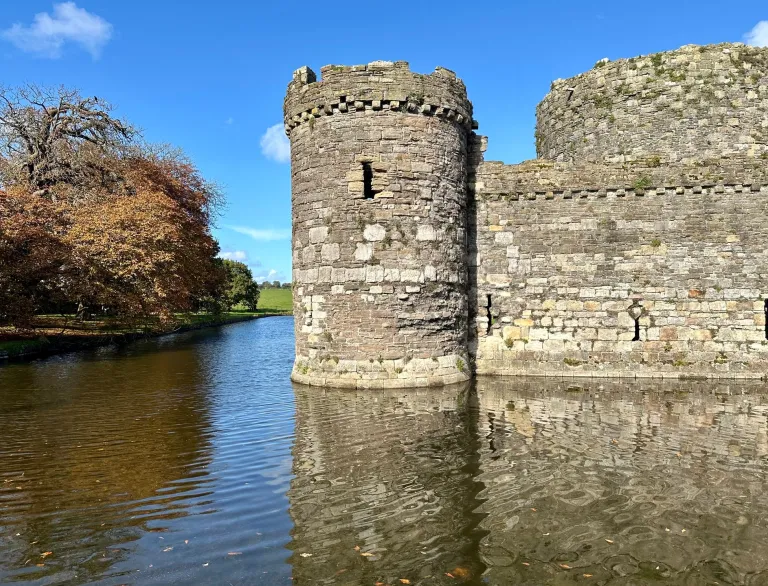
Find a leg at Plas Newydd House & Gardens
The Plas Newydd House & Gardens on the shores of the Menai Strait is the seat of the Marquesses of Anglesey, and has the largest collection of artist Rex Whistler’s works, a military museum, and a fine spring garden. The 1st Marquess led the cavalry charge at the Battle of Waterloo, losing a leg to cannon fire. His wooden leg is displayed here (to be precise, it’s his ‘walking’ leg; he also had legs for riding and dancing!).
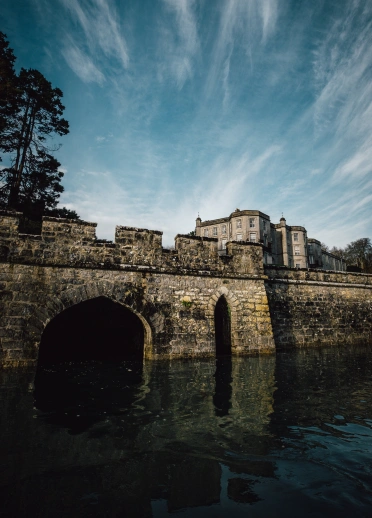
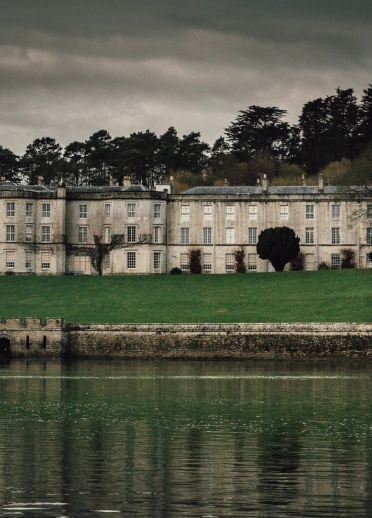
See amazing wildlife at South Stack Lighthouse
When the South Stack Lighthouse was built in 1809, visitors had to cross in a basket slung under a rope; today there’s a slender bridge from Holy Island, reached by a 400-step descent down the cliffs. It’s worth the effort: the surrounding South Stack Cliffs Nature Reserve is home to thousands of breeding seabirds including guillemots, razorbills and puffins, while seals, dolphins and porpoises are often spotted offshore.
Read more: Wonderful Welsh lighthouses
